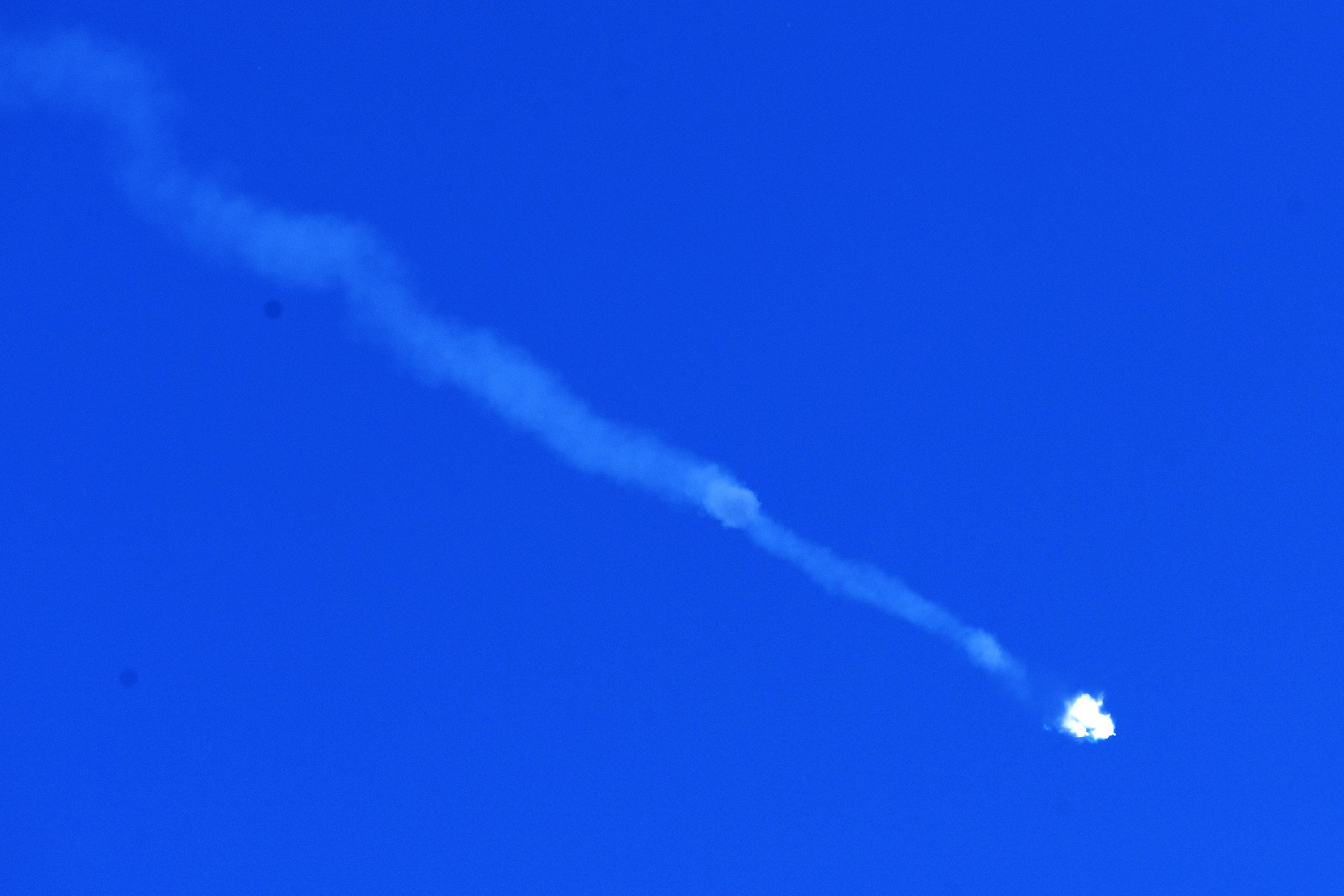No more taxi service to Space Station after Soyuz fiasco
The Soyuz MS-10 rocket carrying US astronaut Nick Hague and Russian cosmonaut Alexey Ovichinin to the International Space Station experienced a failure of one of its engines after takeoff on October 11, 2018 (Kirill KUDRYAVTSEV)
Washington (AFP) – The taxi service to the orbiting International Space Station is taking no passengers until further notice.
Neither the United States nor Russia will be able to send astronauts to the ISS until investigators determine why a Soyuz rocket experienced an anomaly after blast-off Thursday, complicating an already tricky launch calendar for 2019.
The only way to get astronauts from Earth to the ISS since 2011 has been aboard Russian Soyuz rockets.
But the Russian space agency Roscosmos has grounded the Soyuz rockets until a probe has concluded into what caused a Soyuz rocket to show problems shortly after blast-off on Thursday, forcing US astronaut Nick Hague and Russian cosmonaut Aleksey Ovchinin to make an emergency landing in Kazakhstan.
The problem came as the rocket was travelling about 4,700 miles (7,563 kilometers) per hour, just 119 seconds into the voyage, according to NASA.
Hague and Ovchinin activated the emergency system that detached the capsule they were in, and deploy the capsule parachutes to safely land back on Earth.
– How long could the suspension last? –
The next Soyuz launch for the ISS was scheduled for December 20, and it is supposed to take a new three-person crew to the Space Station.
“They’re probably going to ground the Soyuz rockets for a while,” said Erik Seedhouse, an assistant professor at Embry-Riddle Aeronautical University.
Seedhouse, who specializes in applied aviation sciences, estimated that it would last at least “a few months.”
Back in 2015 Progress spacecraft — unmanned transport spacecraft that sent supplies to the ISS — had problems on launchers similar to the Soyuz rocket that experienced problems on Thursday.
However the Thursday case involves a manned vehicle, “so there’s much stricter requirements in investigations,” Seedhouse told AFP.
The European Space Agency has already acknowledged that the incident will impact the ISS calender.
It is making contingency plans for the three current ISS crew members — German Alexander Gerst, American Serena Aunon-Chancellor, and Russian Sergey Prokopiev, all of whom were scheduled to return to Earth in December — to possibly stay aboard the station longer than expected.
The ISS usually has five to six astronauts aboard at any time on six month rotations. The station has been continuously manned since November 2000.
One potential problem: the spacecraft that would let the ISS crew to return to Earth, which docked at the station in June, is equipped with batteries that lose power after about 200 days, NASA said.
That would in theory push the time limit of crew’s return to Earth to early January 2019.
That is the sole limiting factor, said John Logsdon, head of the Space Policy Institute at the George Washington University.
As for food — there is plenty for the crew to last several months, as the station is regularly resupplied by unmanned Japanese and American supply spacecraft.
– When will the American rockets be ready? –
NASA mothballed the Space Shuttle program in 2011, and since then has been paying Russia tens of millions of dollars to send their astronauts to the ISS.
The contract with the Russians ends in late 2019, and the US space agency has contracts with two American companies, Boeing and SpaceX, to step in.
Now operating with a tighter budget than in its heyday during the Apollo era, NASA has evolved into more of an aerospace industry customer instead of developing rockets with them as a partner.
Elon Musk’s SpaceX, who also runs electric carmaker Tesla, will be using its Falcon 9 rockets. Since 2012 SpaceX has launched satellites for NASA, and has carried out 16 resupply missions to the ISS.
Sending astronauts to the ISS will be a first for a privately owned company.
However, SpaceX’s rocket program, just like Boeing’s, has run into delays, as is often the case in the aerospace industry.
An unmanned Falcon 9 rocket carrying a Dragon capsule is scheduled for launch in January 2019, with a similar manned launch set for June 2019.
For Boeing, launches are set for March and August 2019 respectively.
– What is the risk for NASA? –
Soyuz’s problems are a headache for the United States, which has a policy of having a continuous presence in space.
An interruption would be disastrous in terms of image, but also for the research aboard the ISS, as the orbiting station serves as a scientific laboratory.
The slightest delay by SpaceX or Boeing could delay the approval of their manned launch programs. This could mean that the first astronaut they would send to the ISS would depart in 2020 instead of 2019.
Thursday’s Soyuz incident “will put some pressure” on SpaceX and Boeing “to meet their current schedule,” Logsdon told AFP.
To cope with the delay, the next ISS crew might remain aboard the station longer than the usual six months.
But of course that depends on whether the Soyuz are reauthorized for launch.
Disclaimer: This story has not been edited by Siliconeer and is published from a syndicated feed. Siliconeer does not assume any liability for the above story. Validity of the above story is for 7 Days from original date of publishing. Content copyright AFP.


